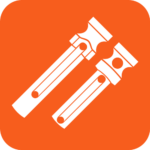
Understanding Reticle Types : Choosing the right reticle type is crucial for enhancing your shooting experience, whether you’re a hunter, competitive shooter, or firearm enthusiast. Your optic’s reticle—or aiming point—directly influences your accuracy, speed, and ability to adapt to different shooting environments. In this comprehensive guide, we’ll compare four popular reticle types: BDC (Bullet Drop Compensator), Christmas Tree, Mil-Dot, and Crosshair reticles. By understanding their unique features and advantages, you can make an informed decision for your next scope purchase.
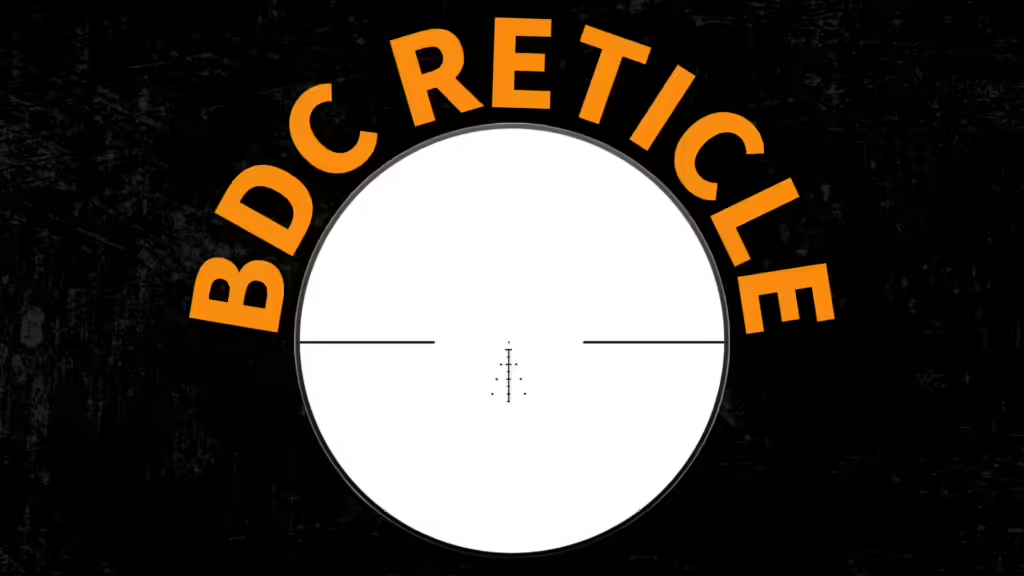
What is a BDC Reticle
BDC (Bullet Drop Compensator) reticles are specifically designed to help shooters adjust for bullet drop at various distances without needing to adjust their scope’s turrets manually. These reticles typically feature multiple horizontal hash marks or dots below the primary crosshair, each representing a pre-calculated aiming point for different ranges.
Key Features of BDC Reticles
BDC reticles offer a straightforward solution to one of the most significant challenges in long-range shooting: bullet drop compensation. Here are the key features that define them:
- Pre-calculated aiming points for specific distances, simplifying the shooting process.
- Calibrated for particular calibers, barrel lengths, and loads, ensuring precise accuracy for certain setups.
- Easy-to-read reticle design with horizontal markings, allowing for quick elevation adjustments.
Advantages of a BDC Reticle
BDC reticles are particularly popular among hunters and tactical shooters for their speed and ease of use. They offer several key advantages:
- Quick target acquisition at different ranges without fumbling with turret adjustments.
- Ideal for fast-paced environments, such as hunting or tactical scenarios where time is critical.
- Simplifies long-range shooting by eliminating complex calculations and estimations.
Drawbacks of BDC Reticles
Despite their advantages, BDC reticles have some limitations:
- Calibration limitations: Since BDC reticles are often calibrated for specific setups, they may not perform optimally with different ammunition types or firearms.
- Lack of versatility: They may not be as adaptable in scenarios where precision and customization are necessary.

What is a Christmas Tree Reticle?
The Christmas Tree reticle gets its name from its distinctive shape, which resembles a tree. It features a vertical line down the center, with horizontal holdover points expanding outward at regular intervals. This design is particularly effective for long-range precision shooting, where shooters need to account for both bullet drop and wind drift.
Key Features of Christmas Tree Reticles
This reticle type is loaded with subtensions to offer multiple aiming points:
- Vertical and horizontal holdover points for both bullet drop and windage compensation.
- Subtensions form a tree-like shape, providing a visual guide for precise adjustments.
- Precise aiming marks that allow shooters to compensate for various factors simultaneously.
Advantages of a Christmas Tree Reticle
Christmas Tree reticles excel in long-range precision shooting, offering several distinct benefits:
- Accurate compensation for elevation and wind drift, making them highly effective in competitive shooting.
- Perfect for extreme long-range engagements, as shooters can account for environmental factors in real-time.
- Ideal for precision rifle shooters, especially those who frequently engage targets at unpredictable distances.
Drawbacks of Christmas Tree Reticles
Although Christmas Tree reticles are incredibly precise, they can present challenges for certain users:
- Overwhelming for novice shooters due to their complexity.
- Cluttered sight picture in some cases, making it harder to focus on the target.
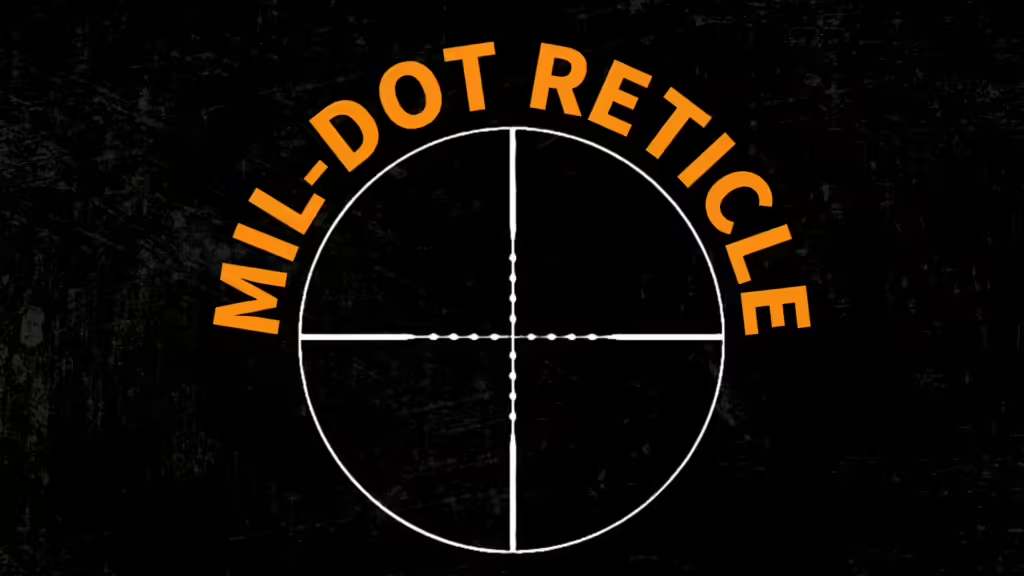
What is a Mil-Dot Reticle?
Mil-Dot reticles are a versatile and widely used reticle type, especially popular among military and law enforcement personnel. They feature a series of small dots or hash marks along the vertical and horizontal crosshairs, with each dot representing an angular measurement known as a “mil” (milliradian).
Key Features of Mil-Dot Reticles
Mil-Dot reticles are designed for precision and rangefinding:
- Dots or hash marks spaced evenly along the crosshairs for quick range estimation.
- Based on milliradian measurements, offering a highly accurate method for calculating bullet drop and wind drift.
Advantages of a Mil-Dot Reticle
Mil-Dot reticles are beloved for their adaptability and precision. They offer several significant advantages:
- Effective range estimation, allowing shooters to accurately gauge distance and adjust their aim accordingly.
- Excellent for bullet drop compensation at various distances without needing to adjust turrets.
- Highly versatile for different calibers and ammunition types, making them a popular choice among tactical shooters.
Drawbacks of Mil-Dot Reticles
While Mil-Dot reticles are highly effective, they may present challenges for some users:
- Requires knowledge of ballistic data: Shooters need to understand mils and ballistic coefficients to make full use of the reticle.
- Learning curve: Understanding and applying Mil-Dot measurements requires practice and familiarity with the system.
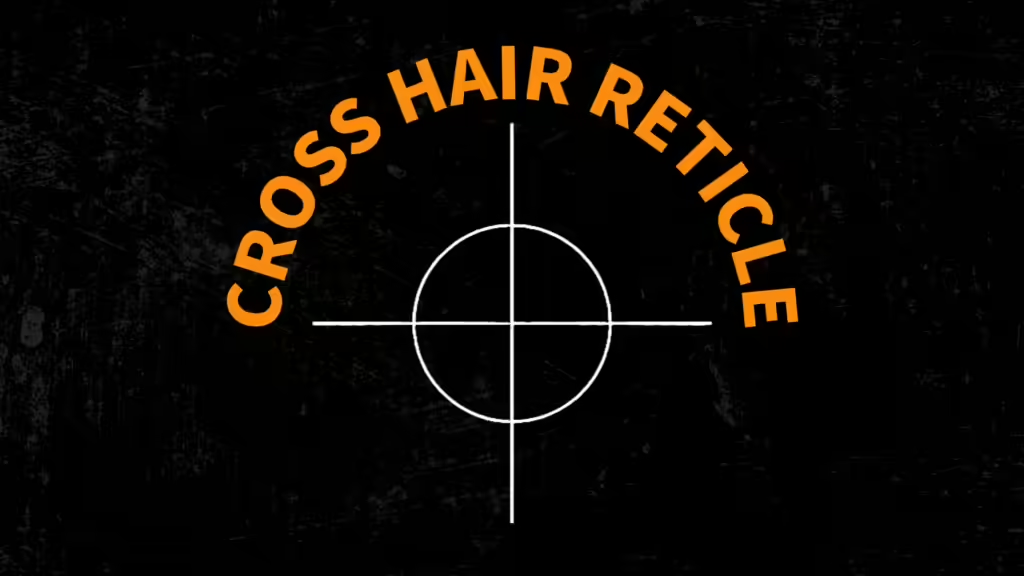
What is a Crosshair Reticle?
Crosshair reticles are the simplest and most traditional reticle design, consisting of two intersecting lines that form a single aiming point. They are commonly found on scopes intended for short- to mid-range shooting and are particularly popular for their clarity and ease of use.
Key Features of Crosshair Reticles
Crosshair reticles are known for their minimalist design:
- Simple vertical and horizontal lines that meet at a single point in the center.
- Unobstructed sight picture, allowing for a clear view of the target.
Advantages of a Crosshair Reticle
The simplicity of a crosshair reticle makes it a favorite for many shooters:
- Easy to use, even for beginners who are just getting into shooting.
- Uncluttered field of view, offering a clean sight picture for precise aiming.
- Reliable for short- and mid-range shooting, where advanced holdover features may not be necessary.
Drawbacks of Crosshair Reticles
However, crosshair reticles have some limitations:
- Lack of advanced features: Crosshair reticles do not offer built-in compensation for windage or elevation.
- Not ideal for long-range shooting, where bullet drop and wind drift need to be accounted for.
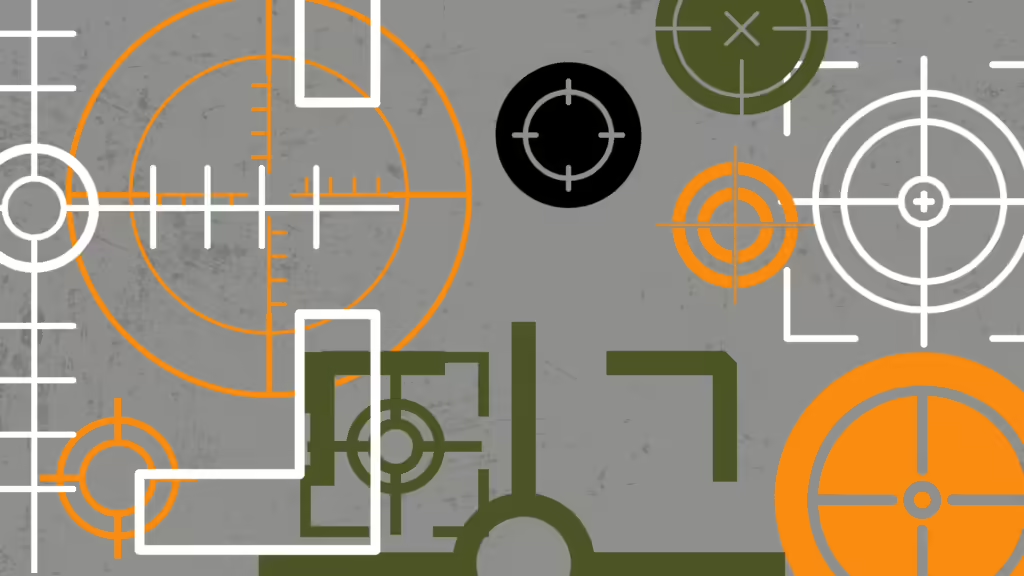
Which Reticle is Right for You?
Choosing the right reticle depends on your shooting style, experience level, and intended use. Here’s a quick guide to help you decide:
- BDC Reticle: Best for shooters who want fast, straightforward long-range shots without dealing with complex range estimation.
- Christmas Tree Reticle: Ideal for precision shooters who need to compensate for both bullet drop and wind drift simultaneously.
- Mil-Dot Reticle: Great for tactical shooters who prefer precise calculations and range estimation.
- Crosshair Reticle: A reliable option for short- to mid-range shooting, especially for beginners or those who prefer simplicity.
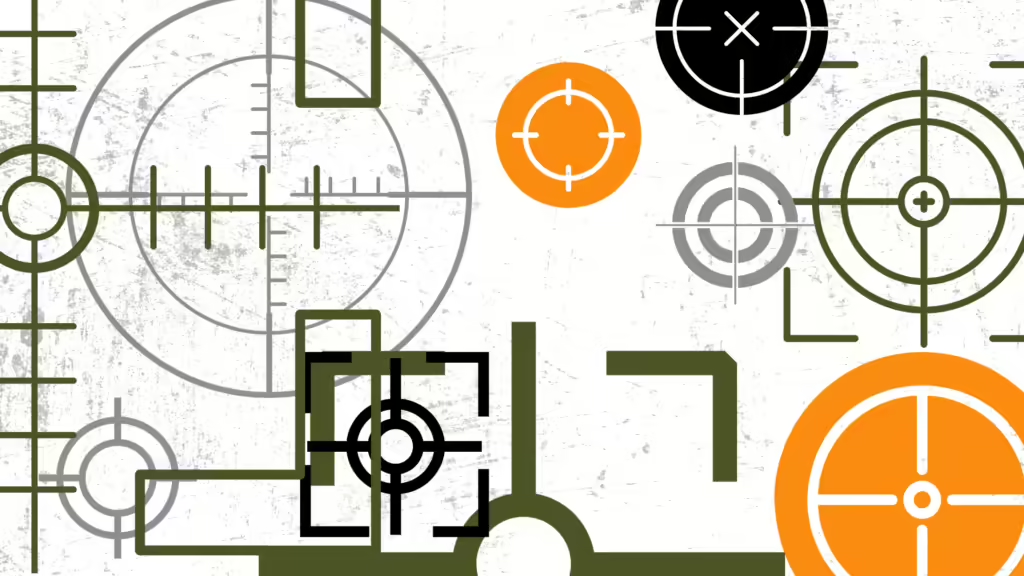
Understanding FFP (First Focal Plane) Reticles
An essential factor to consider when selecting a reticle is whether it’s a First Focal Plane (FFP) or Second Focal Plane (SFP) reticle. In an FFP scope, the reticle scales with magnification, meaning the subtensions remain accurate at any zoom level. This feature is highly beneficial for shooters needing precision across varying distances and magnifications.
How FFP Reticles Work
In FFP scopes, the reticle appears to grow or shrink as you adjust magnification, but the subtensions remain proportionally accurate. This is ideal for long-range shooting, where precise holdovers are required at various magnifications.
Key Features of FFP Reticles
FFP reticles offer several key features that set them apart:
- Consistent holdovers for bullet drop and windage, regardless of magnification.
- More precise at varying distances, allowing for accurate rangefinding and adjustments.
Advantages of FFP Reticles
FFP reticles are particularly beneficial for shooters who need accuracy at multiple magnifications:
- Holdover marks remain accurate at all zoom levels, offering flexibility during shooting.
- Ideal for long-range precision, where every shot counts.
Drawbacks of FFP Reticles
Despite their advantages, FFP reticles do have a few drawbacks:
- Smaller reticle at lower magnifications: At the lowest zoom levels, the reticle may become too small to see clearly.
- Higher cost: FFP scopes are often more expensive than their SFP counterparts.
FFP Reticles in Different Types
When it comes to reticles in the First Focal Plane, each type offers unique advantages:
- BDC in FFP: Ensures bullet drop compensation is accurate at all zoom levels, making it ideal for versatile long-range shooting.
- Christmas Tree in FFP: Provides proportional windage and elevation holdovers, ensuring accuracy across various magnifications.
- Mil-Dot in FFP: Perfect for precise rangefinding and holdover adjustments, making it a favorite for tactical shooters.
- Crosshair in FFP: Allows for precision aiming, even at lower magnifications, offering clarity and simplicity in a variety of situations.
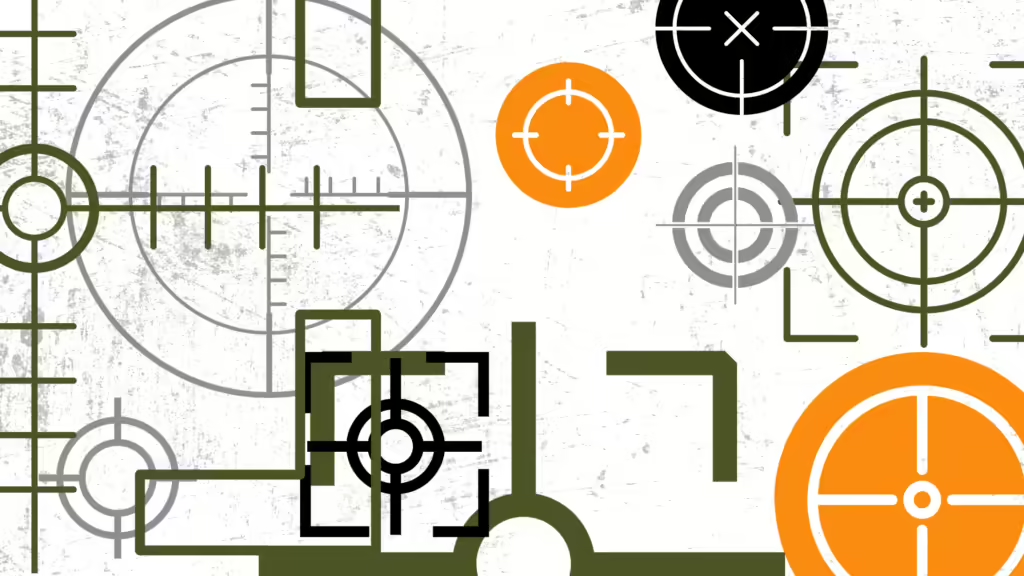
Final Thoughts Understanding Reticle Types
Selecting the right reticle type can significantly impact your shooting experience, whether you’re a seasoned marksman or just starting. Each reticle—whether BDC, Christmas Tree, Mil-Dot, or Crosshair—offers unique advantages that cater to different shooting needs and environments. By understanding the strengths and limitations of each reticle, you can make an informed decision that enhances both your accuracy and overall performance.
Stay tuned for more insights and reviews on firearm optics, where we dive deeper into the best scopes, mounts, and accessories for every shooter. Your perfect shot is just a reticle away. Understanding Reticle Types is key to finding what works for your needs.
FAQs Understanding Reticle Types
What is the best reticle for long-range shooting?
Christmas Tree and Mil-Dot reticles are typically the best for long-range shooting due to their precise holdovers and rangefinding capabilities.
Can I use a BDC reticle with different calibers?
While a BDC reticle is often calibrated for a specific caliber, it can still be used with different calibers, though accuracy may vary.
Are FFP reticles worth the extra cost?
FFP reticles are worth the cost for long-range precision shooters who require consistent accuracy across multiple magnifications.
Do crosshair reticles work for hunting?
Yes, crosshair reticles are commonly used in hunting, especially for short- to mid-range shots due to their simplicity and clear sight picture.
What’s the advantage of using a Mil-Dot reticle?
Mil-Dot reticles allow for accurate rangefinding and bullet drop compensation, making them ideal for tactical and long-range shooting.
How does a Christmas Tree reticle help with windage?
The horizontal holdover points in a Christmas Tree reticle allow shooters to account for wind drift alongside bullet drop, providing precise aiming solutions for challenging shots.
Thank you for reading our Understanding Reticle Types Blog! Leave a comment below we would love to hear your feedback






